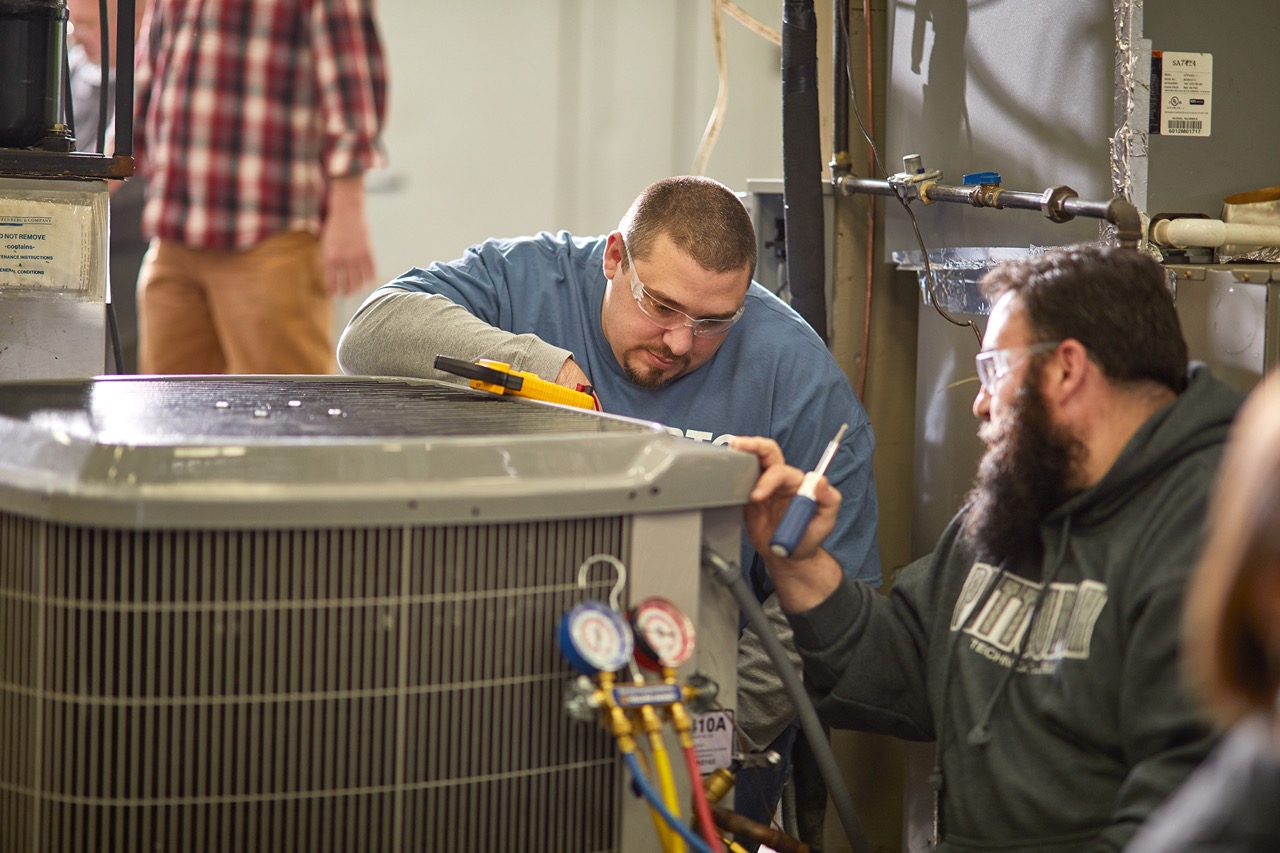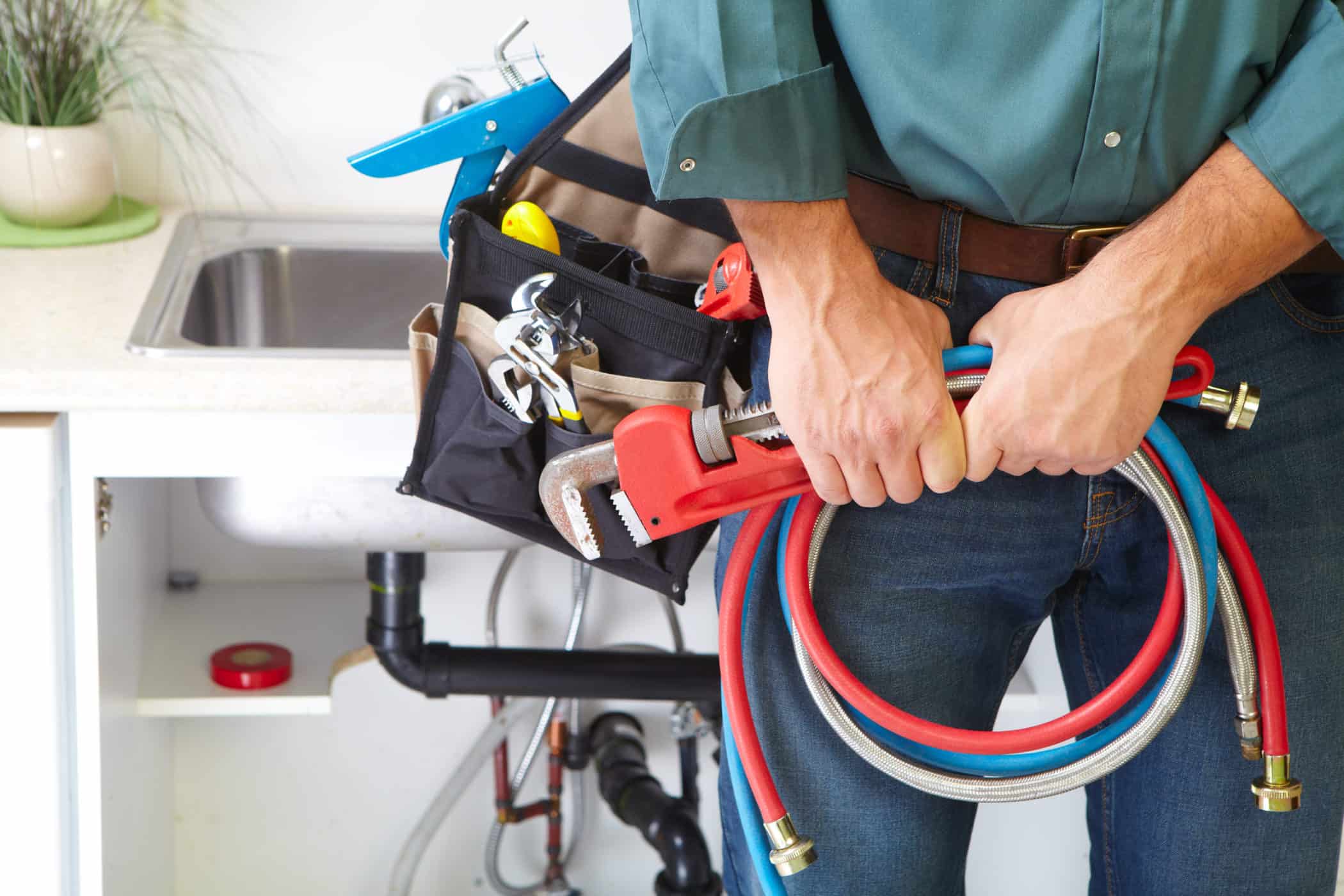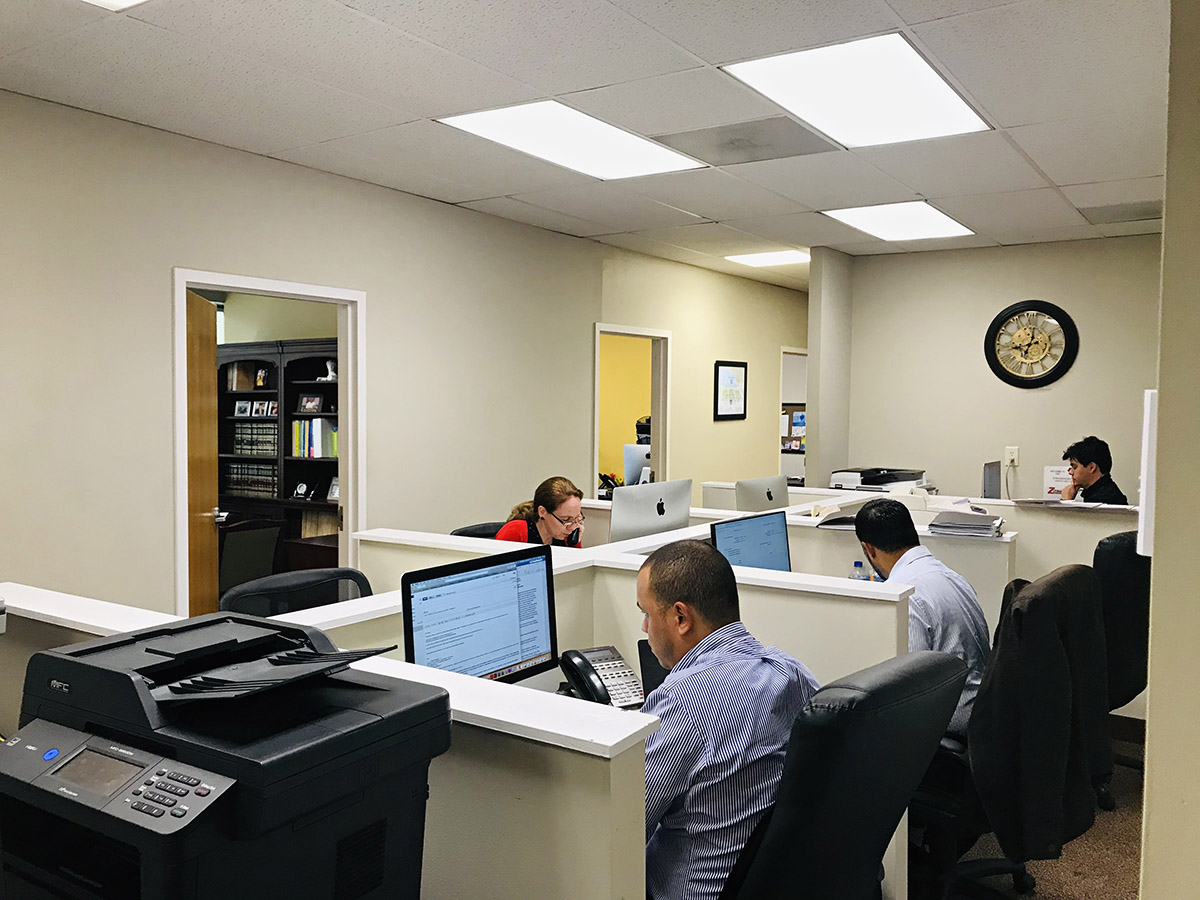Home>Garden Essentials>How To Get A Landscaping License In California


Garden Essentials
How To Get A Landscaping License In California
Modified: March 7, 2024
Learn how to obtain a garden landscaping license in California and turn your passion for gardening into a professional career. Get licensed today!
(Many of the links in this article redirect to a specific reviewed product. Your purchase of these products through affiliate links helps to generate commission for Storables.com, at no extra cost. Learn more)
Introduction
Starting a career in the landscaping industry in California can be an exciting and rewarding venture. Not only does it allow you to use your creativity and passion for gardening, but it also offers the opportunity to create beautiful outdoor spaces for clients to enjoy. However, before you can officially launch your landscaping business, it is important to obtain a landscaping license.
A landscaping license in California is required for anyone who wants to operate as a landscape contractor. The license not only showcases your professionalism and expertise but also assures clients that you have met the necessary qualifications and adhere to industry standards. In this article, we will guide you through the process of getting a landscaping license in California, making your journey to entrepreneurship smoother and more successful.
Key Takeaways:
- Becoming a licensed landscape contractor in California involves meeting eligibility requirements, completing education or training, passing an exam, and submitting an application. It’s a crucial step towards professionalism and success in the industry.
- Once licensed, maintaining liability insurance, staying updated with industry trends, and complying with regulations are essential for long-term success. It’s not just about getting the license, but also about continuous learning and commitment to quality work.
Read more: How To Get A License For Landscaping
Step 1: Determine Eligibility Requirements
Before you begin the process of obtaining a landscaping license in California, it is crucial to determine if you meet the eligibility requirements set by the California Contractors State License Board (CSLB). Reviewing these requirements will help you determine if you are qualified to pursue a landscaping license. Here are the key eligibility requirements:
- Age: You must be at least 18 years old to apply for a landscaping license in California.
- Experience: You need to have a minimum of four years of experience working as a journeyman, foreman, supervisor, or contractor in the landscaping field. Alternatively, you can substitute up to three years of education or training in a related field for the required experience.
- Legal Presence: To obtain a landscaping license, you must be legally present in the United States. Proof of legal presence, such as a valid U.S. passport or permanent resident card, will be required.
- Disqualifying Criminal Convictions: Certain criminal convictions can disqualify you from obtaining a landscaping license. The CSLB will evaluate your criminal history during the application process, and it is important to disclose any past convictions or pending charges.
If you meet these eligibility requirements, you can proceed with the next steps in obtaining your landscaping license in California. However, if you do not meet the requirements at this time, you can take the necessary steps to gain the required experience or education before applying.
Step 2: Complete Required Education or Training
Once you have determined that you meet the eligibility requirements for a landscaping license in California, the next step is to complete the required education or training. This step ensures that you have the necessary knowledge and skills to operate as a licensed landscape contractor. Here are the key aspects to consider:
- Pre-License Education: Aspiring landscape contractors in California are required to complete a pre-license education course. This course covers topics such as landscaping principles, plant selection and care, irrigation systems, pest management, and business practices. The course can be taken at a community college, trade school, or through an approved online provider.
- Continuing Education: After obtaining your landscaping license, you will be required to complete continuing education courses to stay updated on industry trends, new techniques, and emerging regulations. These courses help you enhance your skills and knowledge, ensuring that you provide the best services to your clients.
- Apprenticeship Programs: Participating in an apprenticeship program can be an excellent way to gain hands-on experience and learn directly from experienced professionals in the landscaping industry. These programs typically combine classroom instruction with on-the-job training.
By completing the required education or training, you will not only acquire the necessary skills and knowledge but also demonstrate your commitment to professionalism and continuous learning in the landscaping field. Make sure to keep records of your completed courses or apprenticeship program, as you will need to provide proof of completion during the license application process.
Step 3: Prepare for the Landscape Contractors’ Exam
Once you have completed the required education or training, the next step in obtaining a landscaping license in California is to prepare for the Landscape Contractors’ Exam. This exam is designed to assess your knowledge and understanding of various landscaping concepts and practices. Here are some essential tips to help you with exam preparation:
- Review the Exam Content: Familiarize yourself with the exam content and the topics that will be covered. The Landscape Contractors’ Exam covers areas such as landscape design, construction, maintenance, irrigation systems, pest management, and business and legal practices. Use the California Contractors State License Board’s examination study guides and reference materials to guide your preparation.
- Study Resource Materials: Gather study resources such as textbooks, online courses, practice exams, and study guides to help you prepare for the exam. These resources will provide you with valuable information and help you gauge your understanding of the subject matter.
- Practice Time Management: The Landscape Contractors’ Exam has a time limit, so it is crucial to practice managing your time effectively. Take practice exams under simulated exam conditions to get a sense of the time constraints and improve your speed and efficiency in answering questions.
- Join Study Groups: Collaborating with fellow aspiring landscape contractors can be beneficial. Join study groups or online forums where you can discuss exam topics, clarify doubts, and share study strategies. Learning from others’ experiences and perspectives can enhance your preparation.
- Seek Professional Help: If you feel the need for additional guidance and support, consider enrolling in exam preparation courses or hiring a tutor who specializes in landscape contractor exams. These professionals can provide personalized instruction and help you focus on areas that require improvement.
Proper exam preparation significantly increases your chances of passing the Landscape Contractors’ Exam. Dedicate sufficient time and effort to study and review the material to ensure that you are well-prepared on exam day.
Step 4: Submit License Application
After you have completed your education, gained the necessary experience, and prepared for the Landscape Contractors’ Exam, it’s time to submit your license application to the California Contractors State License Board (CSLB). Here’s what you need to know about the application process:
- Download the Application: Visit the CSLB website and download the landscaping license application form. The form will require you to provide personal information, employment history, education details, and other relevant information.
- Complete the Application: Fill out the license application form accurately and completely. Double-check all information to ensure its accuracy. Incomplete or incorrect applications may cause delays in the licensing process.
- Provide Supporting Documents: Along with the completed application form, you will need to submit supporting documents such as proof of education or training completion, experience certificates, and any other required documentation to demonstrate your qualifications.
- Pay Application Fee: There is an application fee that must be paid when submitting your license application. The fee amount varies, so check the current fee schedule on the CSLB website. Payment can be made through various methods, including online payment or by mail.
- Submit the Application: Once you have completed the application and gathered all the necessary documentation, submit your application to the CSLB. You can either mail it to their office or submit it in person at one of their service centers.
It is crucial to ensure that your license application is accurately completed and includes all required documents. Any errors or omissions may result in delays in the processing of your application. After submitting your application, the CSLB will review your application and assess your qualifications to determine if you meet the requirements for a landscaping license.
Once your application is approved, you will proceed to the next steps in the licensing process, including fingerprinting and background checks, obtaining liability insurance, and taking the Landscape Contractors’ Exam.
Read more: How To Get A Landscape Design License
Step 5: Complete Fingerprinting and Background Check
As part of the landscaping license application process in California, you will be required to complete a fingerprinting and background check. This step ensures that you meet the state’s requirements for personal and professional conduct. Here’s what you need to know:
- Fingerprinting: To initiate the background check process, you will need to schedule an appointment to get your fingerprints taken. The California Department of Justice (DOJ) and the Federal Bureau of Investigation (FBI) will use these fingerprints to conduct a thorough background check.
- Live Scan Process: Live Scan is the fingerprinting method used in California. You will typically visit a Live Scan location where a qualified technician will digitally capture your fingerprints. The technician will provide you with a receipt stating that your fingerprints have been taken.
- Background Check: The DOJ and FBI will use your fingerprints to check for any criminal history, including convictions, misdemeanors, and pending charges. It is crucial to disclose any previous convictions or pending charges during the license application process as non-disclosure may lead to application rejection.
- Processing Time: The background check process can take several weeks, so it is important to complete the fingerprinting as soon as possible to avoid delays in the licensing process. Once the background check is completed, the CSLB will be notified of the results.
- Clearance Notification: If your background check reveals no disqualifying convictions or issues, you will receive a clearance notification from the CSLB. This clearance is required to proceed with the remaining steps of obtaining your landscaping license.
It is important to note that certain criminal convictions, such as fraud, embezzlement, or crimes related to the landscaping industry, may disqualify you from obtaining a landscaping license in California. However, each case is evaluated individually, and the CSLB takes into account factors such as the nature of the offense and the time that has passed since the conviction.
Completing the fingerprinting and background check is a crucial step in the licensing process, as it helps ensure the safety and integrity of the landscaping industry by screening applicants for any potential issues that may affect their ability to provide quality services to clients.
Before applying for a landscaping license in California, make sure to meet the experience and education requirements, submit the necessary paperwork, and pass the required exams.
Step 6: Obtain Liability Insurance
Obtaining liability insurance is an essential requirement for obtaining a landscaping license in California. This step helps protect both you and your clients in the event of accidents, damages, or injuries that may occur during your landscaping projects. Here’s what you need to know about liability insurance:
- Minimum Insurance Coverage: As a landscape contractor, you are required to carry a minimum level of liability insurance coverage. The California Contractors State License Board (CSLB) mandates that you have at least $1 million in general liability insurance coverage.
- Insurance Certificate: Before you can proceed with the licensing process, you will need to obtain an insurance certificate from a licensed insurance provider. The certificate should clearly state the coverage amount and list the CSLB as an additional insured party.
- Insurance Options: It is advisable to consult with an insurance agent who specializes in commercial liability insurance for landscaping businesses. They can help you determine the appropriate coverage for your specific needs, such as property damage, bodily injury, and completed operations coverage.
- Ongoing Insurance Requirement: Once you obtain your landscaping license, it is important to maintain your liability insurance coverage throughout the duration of your licensure. The CSLB may require proof of insurance during renewal periods, and failing to maintain coverage can result in license suspension or revocation.
Liability insurance provides peace of mind to both you and your clients. It protects you from potential financial liabilities that may arise from accidents or property damage during landscaping projects. Additionally, it reassures your clients that you are a responsible and professional contractor who values their safety and well-being.
When obtaining liability insurance, make sure to compare quotes from different insurance providers to find the best coverage options at a reasonable cost. Working with an experienced insurance agent can help ensure that you have the appropriate coverage for your specific business needs.
Step 7: Pass the Landscape Contractors’ Exam
Passing the Landscape Contractors’ Exam is a crucial milestone in obtaining your landscaping license in California. This exam evaluates your knowledge and understanding of various landscaping concepts and practices. Here’s how you can prepare for and successfully pass the exam:
- Study the Exam Content: Familiarize yourself with the exam content and the topics that will be covered. The California Contractors State License Board (CSLB) provides study guides and reference materials to help you understand the exam’s scope and content.
- Review Study Materials: Gather study materials such as textbooks, online resources, practice exams, and study guides. These resources will help you reinforce your knowledge and grasp key concepts related to landscaping principles, design, construction, irrigation systems, pest management, and business practices.
- Take Practice Exams: Taking practice exams is an effective way to assess your understanding of the exam content and familiarize yourself with the exam format. Practice exams will help you identify areas that require further study and improve your time management skills.
- Utilize Study Groups or Courses: Joining study groups or enrolling in exam preparation courses can provide additional support and guidance. Collaborating with other aspiring landscape contractors allows you to discuss exam topics, clarify doubts, and share study strategies. Working with a study group or instructor can enhance your preparation process.
- Pace Your Preparation: Give yourself enough time to study and prepare for the exam. Break down the content into manageable sections and create a study schedule that allows for regular review and practice. Consistency and dedication in your preparation will increase your chances of success.
- Stay Calm and Confident: On the day of the exam, ensure you are well-rested and mentally prepared. Take deep breaths, stay calm, and approach each question with confidence. Time management is crucial during the exam, so pace yourself accordingly and allocate sufficient time to answer each question.
Passing the Landscape Contractors’ Exam demonstrates your competence and knowledge in the field of landscaping. It validates your skills and expertise to potential clients, enhancing your credibility as a licensed landscape contractor.
Remember, exam preparation is key to success. Dedicate ample time and effort to study, utilize available resources, and seek support from study groups or courses. By being well-prepared and confident, you can increase your chances of passing the exam and moving closer to obtaining your landscaping license.
Step 8: Pay License Fees
After successfully passing the Landscape Contractors’ Exam, the next step in obtaining your landscaping license in California is to pay the required license fees. These fees cover the cost of processing your application and granting you the official license. Here’s what you need to know:
- Fee Schedule: The California Contractors State License Board (CSLB) provides a fee schedule that outlines the specific fees required for different types of licenses. The fee amount may vary depending on the type of license you are applying for and other factors.
- Payment Methods: The CSLB accepts various payment methods for license fees. You can typically pay the fees online using a credit or debit card, by mailing a check or money order, or by visiting one of the CSLB’s service centers to make an in-person payment.
- Timely Payment: It is important to submit your license fees promptly to avoid any delays in the licensing process. Delayed payment may result in a delay in receiving your landscaping license.
- Renewal Fees: Once you are licensed as a landscape contractor, you will be required to renew your license periodically. This involves paying renewal fees to maintain your license in good standing. The renewal cycle typically occurs every two years.
It is essential to keep track of the fee schedule and ensure that you pay the correct amount for your landscaping license. Check the CSLB website for the most up-to-date fee information and instructions on how to make the payment.
Paying the license fees is an important step in the licensing process as it demonstrates your commitment to being a licensed professional in the landscaping industry. Once the fees are paid, the CSLB will process your payment and finalize the issuance of your landscaping license.
Remember to maintain records of your payment receipts and license renewal dates. Being aware of renewal deadlines and promptly renewing your license will help you avoid any potential penalties or lapses in your licensure.
Step 9: Receive and Maintain Your License
After completing all the necessary steps, including passing the Landscape Contractors’ Exam, paying the license fees, and fulfilling the requirements, you are now ready to receive your landscaping license in California. Here’s what you need to know about receiving and maintaining your license:
- License Issuance: Once the California Contractors State License Board (CSLB) processes your application and verifies that you have met all the requirements, they will issue your landscaping license. You will receive a physical license certificate that officially authorizes you to work as a licensed landscape contractor.
- License Display: It is important to prominently display your landscaping license at your place of business or on any job sites where you provide services. This demonstrates your legitimacy as a licensed professional and builds trust with your clients.
- License Renewal: Your landscaping license must be renewed periodically to remain active and valid. The CSLB will send renewal notices to your registered address or email, reminding you of the upcoming renewal date. It is essential to submit the renewal application and fees on time to avoid any interruptions in your licensure.
- Continuing Education: As a licensed landscape contractor, you are required to complete continuing education courses to stay updated on industry trends and regulations. The CSLB mandates a specific number of continuing education hours to be completed during each renewal cycle. Make sure to fulfill these requirements to maintain your license.
- Compliance with Regulations: As a licensed professional, it is crucial to adhere to all relevant regulations, codes, and laws governing the landscaping industry. Stay informed about any changes or updates in the regulations that may affect your work, and ensure that you operate in compliance with these standards.
- License Verification: Clients and potential business partners may request to verify your landscaping license. The CSLB provides an online license lookup service, which allows anyone to search and verify the status and details of your license. It is important to maintain a good standing and keep your license information updated.
Receiving and maintaining your landscaping license signifies your dedication to professionalism, quality work, and adherence to industry standards. It differentiates you from unlicensed practitioners and boosts your credibility in the eyes of clients and business partners.
By staying up-to-date with license renewal, continuing education, and compliance with regulations, you can ensure the long-term success and growth of your landscaping business.
Conclusion
Obtaining a landscaping license in California is a significant step towards establishing yourself as a professional and reputable landscape contractor. It showcases your expertise, professionalism, and commitment to providing high-quality services to your clients. Throughout this article, we have outlined the nine essential steps to guide you through the process of getting a landscaping license:
- Determine Eligibility Requirements
- Complete Required Education or Training
- Prepare for the Landscape Contractors’ Exam
- Submit License Application
- Complete Fingerprinting and Background Check
- Obtain Liability Insurance
- Pass the Landscape Contractors’ Exam
- Pay License Fees
- Receive and Maintain Your License
By following these steps and fulfilling the requirements set by the California Contractors State License Board (CSLB), you can navigate the licensing process smoothly and legally operate as a landscape contractor.
Remember, obtaining a landscaping license not only offers professional benefits but also contributes to the growth and success of your business. It instills confidence in your clients, differentiates you from unlicensed competitors, and opens up opportunities for larger and more prestigious projects.
However, obtaining a license is not the end of the journey. It is essential to stay updated with industry trends, regulations, and best practices through continuous education and professional development. Maintaining a strong commitment to professionalism, quality work, and compliance with regulations will set you apart and position you as a trusted expert in the landscaping field.
Now that you have a comprehensive understanding of the steps involved in obtaining a landscaping license in California, it’s time to embark on your journey to becoming a licensed landscape contractor. Good luck on this exciting and rewarding career path!
Frequently Asked Questions about How To Get A Landscaping License In California
Was this page helpful?
At Storables.com, we guarantee accurate and reliable information. Our content, validated by Expert Board Contributors, is crafted following stringent Editorial Policies. We're committed to providing you with well-researched, expert-backed insights for all your informational needs.














0 thoughts on “How To Get A Landscaping License In California”